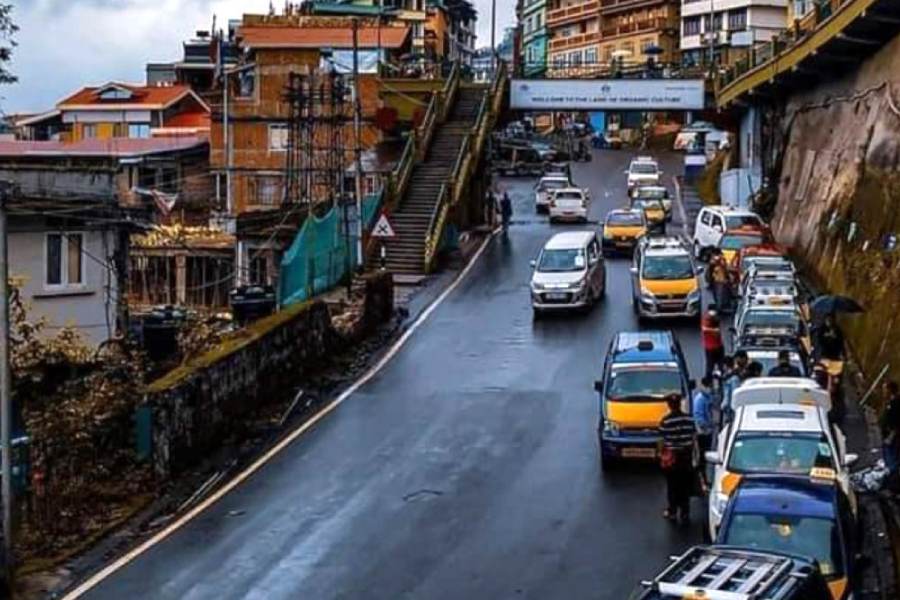The state transport department made the announcement on Tuesday after running trials of the new system at various places for about a week
Vivek Chhetri, TT, Darjeeling, 15.05.24 :
A road in Gangtok. Sikkim will introduce an artificial intelligence (AI)-driven traffic management system throughout the state from May 25.
The state transport department made the announcement on Tuesday after running trials of the new system at various places for about a week.
“In this first phase, the system has been installed in 16 points across Sikkim. Depending on the feedback from police, we will install the system at additional places in the second phase,” Raj Yadav, the secretary of the transport department, told The Telegraph.
The system has been set up at four places in Gangtok.
The new system powered by advanced AI algorithms automatically detects the validity of documents like insurance, and fitness pollution and immediately generates e-challans.
“Since the data of all vehicles in the country have been uploaded on NIC (National Informatics Centre), the system on reading the registration number can scan the document details of the vehicle,” said Yadav.
Apart from hauling up document defaulters, the system that encompasses cameras can detect and fine traffic violations such as speeding, jumping signals and improper lane usage among others.
This is the first time that an AI-driven traffic management system has been introduced in the region. Since the start of the trial period, people in Sikkim have been rushing to get their documents, especially pollution certificates, updated.
“There is a huge rush. In fact, we kept our pollution centre in Gangtok open even on Sunday to tackle the rush,” said an employee of the centre.
The new system is also expected to ensure better traffic control in Gangtok, where traffic congestion is the norm, especially during peak tourism seasons.
“For example, if there is no congestion on a particular stretch, the traffic signal would coninue to remain green thus ensuring smooth traffic flow,” said Yadav.
Many traffic signals work on timers which does not necessarily reflect the needs of the road. Traffic signals manned by humans do not have a live update on the overall traffic situation in the area either.
The police said the system would ensure that time was not wasted unlike when physical checking of vehicle documents was done.
“Transparency will also be strengthened,” quipped a driver.

